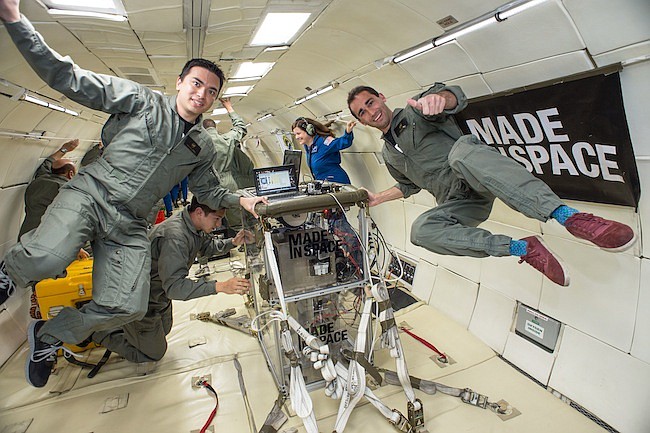- April 23, 2024
-
-
Loading

Loading

Two projects with local connections were recently selected to fly on SpaceShipTwo, the world’s first commercial space flight by Virgin Galactic.
No date has been set for the launch, but Virgin Galactic anticipates that it will occur sometime in 2014.
Researchers say the experiments benefit from prolonged exposure to microgravity, which is the period of free fall before an object once again encounters the effects of gravity, similar to the momentary feeling of weightlessness encountered on a roller coaster, only prolonged.
This unique environment can be both difficult and expensive to achieve and therefore incredibly valuable for researchers.
Despite the challenges involved with microgravity, it is a necessary condition for many projects that depend on it, such as those selected to fly on SpaceShipTwo.
Because operating experiments in microgravity is less expensive than launching fully into space, NASA sponsors its Flight Opportunities program to provide researchers space on sub-orbital craft for them to conduct experiments.
All 12 of the experiments selected for this flight were chosen by NASA’s Flight Opportunities program.
Dr. Joshua Colwell, a University of Central Florida physics professor is heading one of the experiments, designed to measure the behavior of dust in gentle collisions in low-gravity environments such as the surfaces of small asteroids.
The information gathered would provide insights into how dust on asteroids or small moon-like structures would react when impacted, perhaps by future manned missions.
UCF students have been actively involved in the design, fabrication and testing of the hardware and electronics for the experiment, Colwell said.
Made in Space, co-founded by UCF engineering grad Jason Dunn, is also flying a project on SpaceShipTwo, but they are keeping their project closer to the vest at this time.
“We are not making details of the project public just yet,” said Made in Space’s marketing and communication director Grant Lowery.
He was able to confirm though that the project is related to their work building the first 3D printer designed to work in zero gravity.
According to Galactic’s website, Made in Space “has designed an advanced manufacturing experiment intended to feed the development of future 3D printers customized for use in space.”
Their custom 3D printer has already been approved for launch to the International Space Station on SpaceX CRS-4 in August.
The 3D printer works like a standard earth-bound printer, except that it has proprietary modifications developed to allow it to work independent of gravity.
This breakthrough would allow astronauts working on board the International Space Station to create new tools, replacement parts or consumables for use immediately, rather than having to wait for them to arrive from earth.
When the printer arrives at the ISS, it will come complete with pre-planned designs, ready to print, but eventually will be capable of just about any new design necessary, Lowery said.
In addition to its usefulness to astronauts, Made in Space is also taking orders for researchers, manufacturers and artists who wish to have their designs printed in space.
“We already have dozens of companies and individuals interested,” Lowery said.
He declined to name a price for such a service, stating that each project would vary depending on complexity, size and materials.